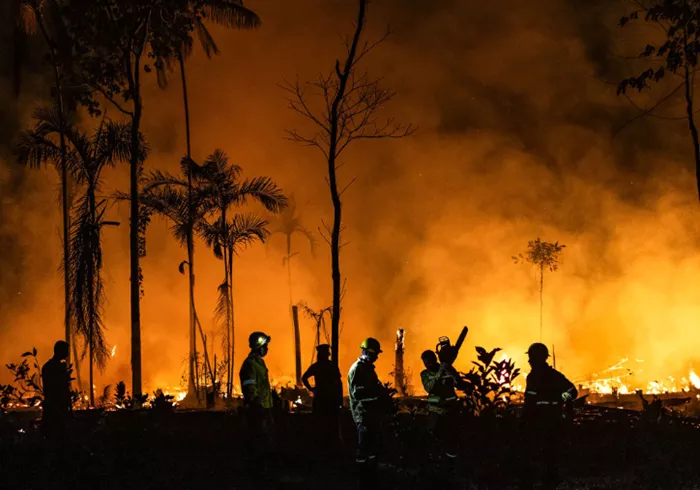In 2019–20, Australia experienced some of the most devastating wildfires in its history, with more than 10 million hectares of land scorched. The tragedy sparked an urgent research effort to understand how the fires affected the country’s biodiversity.
A new study, published in the journal Nature, sheds light on the aftermath of these megafires. The research, a collaboration between over 100 scientists, examined the effects of the fires on more than 1,300 plant and animal species, making it the largest dataset of its kind following a single fire season.
The results revealed that while some species saw their populations decline, others thrived in the aftermath. The study highlighted that the pre-fire condition of the land played a critical role in these outcomes, particularly the frequency of previous fires in the area.
The Impact of Fire Frequency
The research indicates that frequent fuel-reduction burning, commonly used in Australia to prevent large fires, might actually worsen the effects of major wildfires on ecosystems. The study found that areas with a history of frequent fires—particularly those that had burned three or more times in the previous 40 years—suffered significantly more severe declines in biodiversity compared to areas with fewer burns.
Some species, especially larger mammals, were hit hardest. Mammals, unable to take shelter in small burrows or fly to safety like smaller animals, showed population declines that were twice as large as those of other species groups. In addition, frequent fires hinder the ability of plants to regenerate, leaving many species without the habitat they need to survive.
The Winners: Species That Benefit from Frequent Fires
Despite the devastation, the study also found that some species actually flourished in the aftermath of frequent fires. These included species that quickly recolonize burned areas, such as certain grasses that attract animals seeking food or shelter. For these species, the repeated occurrence of fire created an environment in which they could thrive.
However, the researchers were quick to note that the gains for some species do not offset the overall losses. As areas become increasingly fire-prone, species that struggle to survive after fires will face even greater challenges. The decline of these species poses a significant threat to conservation efforts and could have broader implications for ecosystems and human well-being, as biodiversity supports vital services such as clean water and pollination.
A Call for Rethinking Fire Management
The study raises questions about the effectiveness of current fire management practices. While controlled burning can reduce fuel loads and mitigate fire risks in the short term, the researchers argue that frequent burning may ultimately disrupt ecosystems, leaving them more vulnerable to extreme fires.
Although some past studies have shown that fuel-reduction burning can reduce fire severity, the new research suggests that it may not be enough to prevent long-term ecological damage. Areas that have been repeatedly burned over a period of decades experienced up to 93% more severe biodiversity declines than areas that had seen fewer fires.
To address this, the researchers recommend exploring alternative fire management strategies. One possibility is improving the detection and suppression of fires to prevent them from becoming large-scale megafires. Another potential approach is supporting Indigenous fire practices, which are more closely aligned with the natural rhythms of the land.
The Role of Unburned Habitat in Recovery
Interestingly, the study also found that the presence of unburned habitat within 2.5 kilometers of a fire-affected area can help mitigate the impact of wildfires on biodiversity. These unburned patches allow plants and animals to repopulate damaged areas more quickly, aiding recovery efforts.
The researchers suggest that fire management strategies should focus on preserving unburned areas during fires, rather than burning them in an attempt to control flare-ups. By doing so, the landscape may recover more rapidly and support the return of native species.
Climate Change and the Future of Fire Management
While the study offers valuable insights into the immediate effects of the 2019–20 megafires, it also underscores the long-term challenge posed by climate change. As global temperatures rise, extreme fires are becoming more frequent and intense, exacerbating the biodiversity crisis.
The researchers emphasize that without addressing the underlying drivers of climate change, any fire management strategy—no matter how well-designed—will likely be insufficient to protect Australia’s unique ecosystems.
The study calls for a comprehensive rethink of fire management policies, urging authorities to consider a broader range of approaches that can support both the environment and communities in the face of increasingly severe fires.
Related topics:
- How I Got My Orchid to Bloom More Than Ever in Just 4 Months with an Easy Growing Technique
- ReLeaf Cedar Rapids Plants 3,000 Trees This Fall, Bringing This Year’s Total to 11,000
- New Trees Make Breathing Easier for Neighbors in West Indy


